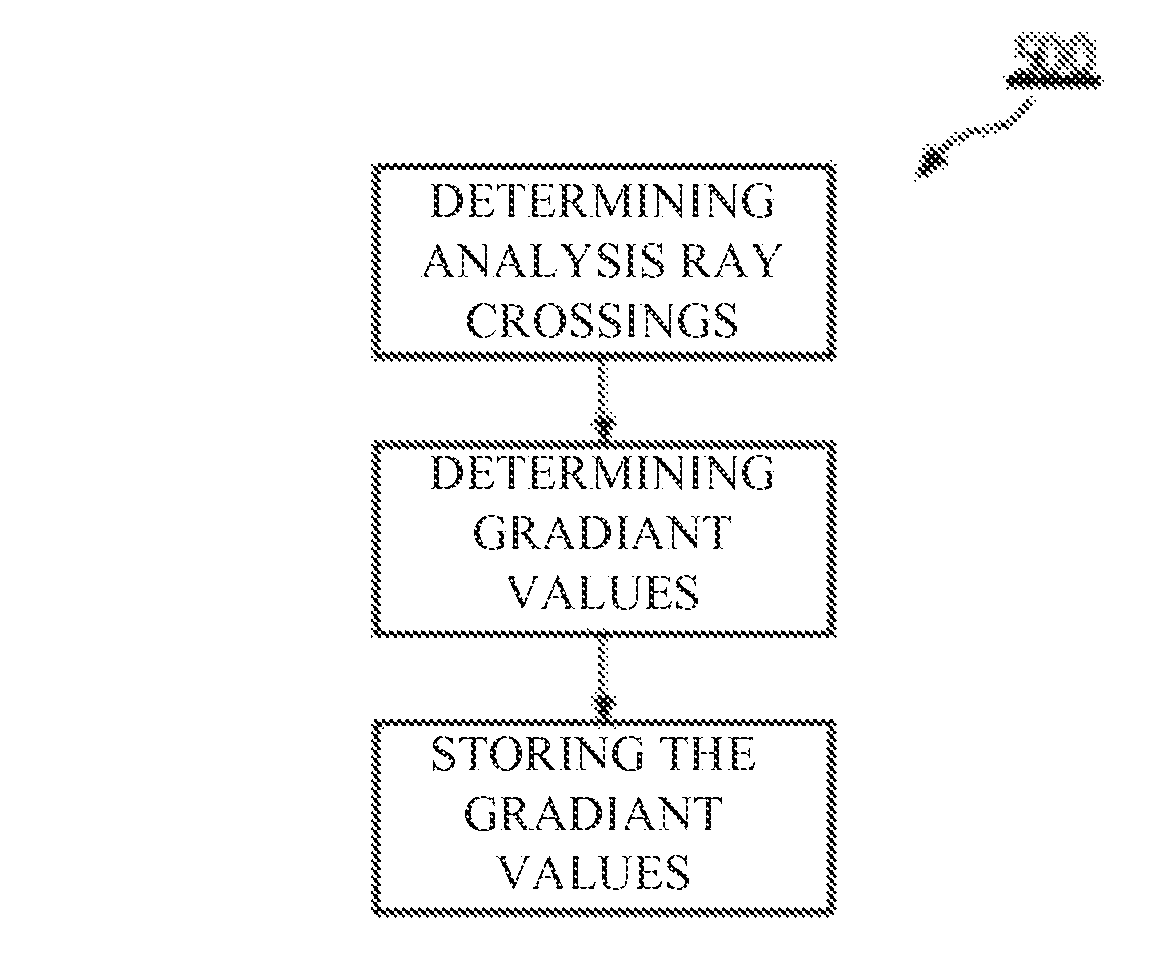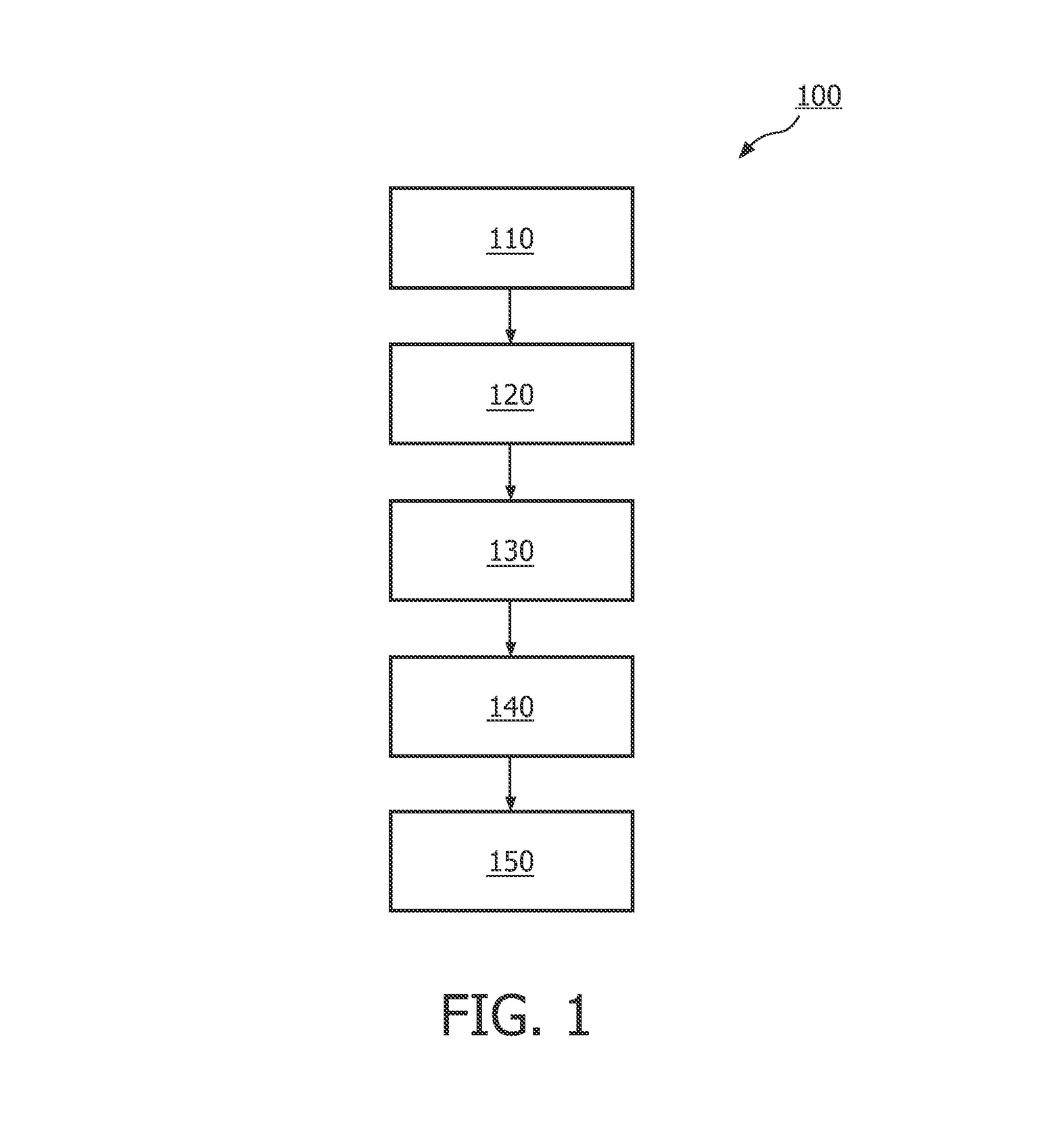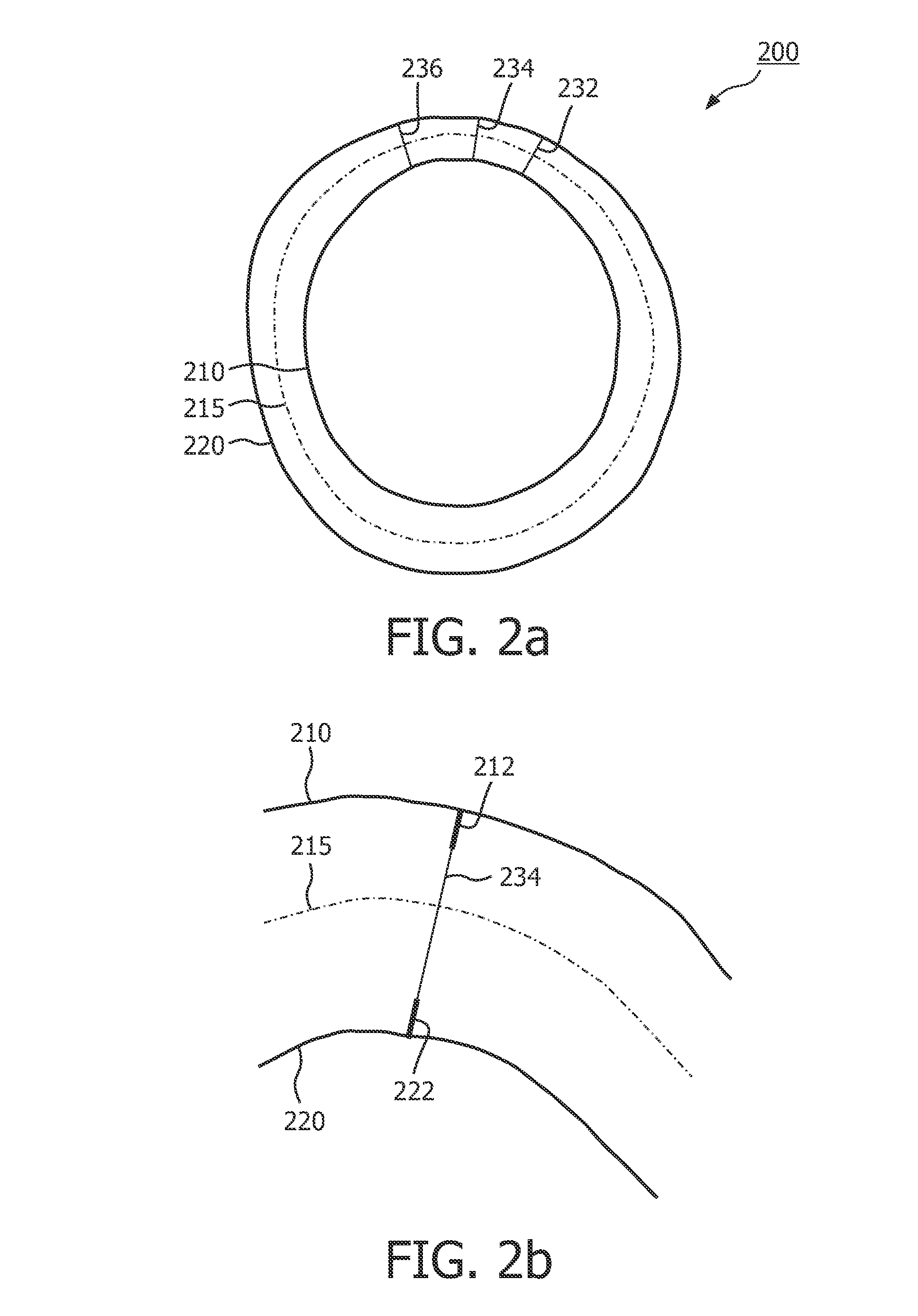Transmural perfusion gradient image analysis
a technology of transmural perfusion and image analysis, applied in image analysis, image enhancement, instruments, etc., can solve the problems of lack of diagnostic capability and system analysis of sequence of datasets representing sequential images of objects
- Summary
- Abstract
- Description
- Claims
- Application Information
AI Technical Summary
Benefits of technology
Problems solved by technology
Method used
Image
Examples
Embodiment Construction
[0061]In FIG. 1, the architecture of an image analyzing system 100 is schematically illustrated. The image analyzing system 100 comprises an image acquisition module 110, an image pre-processing module 120, a ray determination means 130, a gradient determination means 140 and a data storage means 150.
[0062]The various modules and means of system 100, such as an image pre-processing module 120, a ray determination means 130, a gradient determination means 140, may comprise, e.g., dedicated hardware, a microprocessor arranged for executing a suitable software program, or combinations thereof.
[0063]The image acquisition module 110 is arranged to acquire a suitable sequence of images, which are encoded using at least a two-dimensional array of values. The values may be floating point-type or integer-type. The values may be constraint to some range. For example, the values may be integers in a range from 0 up to and including 255. Various imaging modalities may be used to obtain image da...
PUM
 Login to View More
Login to View More Abstract
Description
Claims
Application Information
 Login to View More
Login to View More - R&D
- Intellectual Property
- Life Sciences
- Materials
- Tech Scout
- Unparalleled Data Quality
- Higher Quality Content
- 60% Fewer Hallucinations
Browse by: Latest US Patents, China's latest patents, Technical Efficacy Thesaurus, Application Domain, Technology Topic, Popular Technical Reports.
© 2025 PatSnap. All rights reserved.Legal|Privacy policy|Modern Slavery Act Transparency Statement|Sitemap|About US| Contact US: help@patsnap.com



